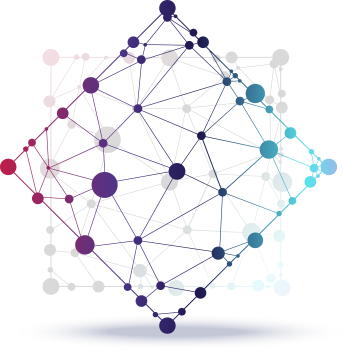- Emerging Horizons: Examining the Critical Shifts Shaping News Today and Their Far-Reaching Consequences.
- The Impact of Social Media on News Consumption
- The Rise of Misinformation and Disinformation
- The Evolving Role of Traditional Journalism
- Innovative Approaches to Combatting Information Disorder
- The Future of News and Civic Engagement
Emerging Horizons: Examining the Critical Shifts Shaping News Today and Their Far-Reaching Consequences.
In an era defined by rapid information dissemination, understanding the evolving landscape of how we receive and process news today is paramount. The traditional models of journalism are undergoing significant transformations, driven by technological advancements, shifting consumption habits, and a growing distrust in established institutions. This article delves into the critical shifts shaping the news ecosystem, examining the implications for individuals, societies, and democracies worldwide. We will explore the rise of social media as a primary news source, the challenges of misinformation and disinformation, and the innovative approaches being adopted to foster a more informed and engaged citizenry.
The immediacy and accessibility of online platforms have fundamentally altered how people stay informed. While this provides unprecedented opportunities for civic engagement and knowledge acquisition, it also presents new vulnerabilities. The proliferation of “fake news” and the echo-chamber effect, where individuals are primarily exposed to information confirming existing beliefs, pose serious threats to informed decision-making and social cohesion. Navigating this complex environment requires critical thinking skills, media literacy, and a commitment to seeking diverse perspectives.
The Impact of Social Media on News Consumption
Social media platforms have become a dominant force in how people discover and share information. A significant portion of the population now relies on platforms like Facebook, Twitter, and Instagram as their primary source of news, surpassing traditional media outlets in reach and frequency. This shift in consumption patterns has several key implications. Firstly, it democratizes the news cycle, allowing individuals and independent journalists to bypass traditional gatekeepers and share information directly with the public. Secondly, it accelerates the spread of information, providing real-time updates on events as they unfold.
However, this democratization comes at a cost. Social media algorithms are designed to maximize engagement, often prioritizing sensational or emotionally charged content over factual reporting. This can contribute to the spread of misinformation and polarize public opinion. Furthermore, the lack of editorial oversight on many social media platforms makes it difficult to verify the accuracy of information, leading to the rapid dissemination of false or misleading claims. The reliance on algorithmic curation also creates filter bubbles, limiting exposure to diverse perspectives and reinforcing existing biases.
The nature of social media incentivizes brevity and visually appealing content, which can sometimes sacrifice nuance and depth in reporting. Complex issues are often reduced to soundbites and headlines, lacking the context necessary for informed understanding. This trend has prompted concerns about the quality of public discourse and the public’s ability to critically assess information.
| 2.09 billion | 43% | |
| YouTube | 2.51 billion | 38% |
| 1.47 billion | 30% | |
| TikTok | 1.19 billion | 26% |
| Twitter (X) | 550 million | 37% |
The Rise of Misinformation and Disinformation
The proliferation of misinformation and disinformation represents a significant challenge to the integrity of the news ecosystem. Misinformation refers to inaccurate information spread unintentionally, while disinformation is the deliberate dissemination of false or misleading information with malicious intent. The motives behind disinformation campaigns are varied, ranging from political manipulation and propaganda to financial gain and social disruption. The speed and scale at which disinformation can spread through social media make it particularly dangerous. Often, it’s designed to look like legitimate news, using familiar branding or mimicking trusted news sources.
Combating misinformation requires a multi-faceted approach. Fact-checking organizations play a crucial role in debunking false claims and providing accurate information. However, their efforts are often outpaced by the speed at which disinformation spreads. Media literacy education is also essential, empowering individuals to critically evaluate information and identify potential red flags. Platforms themselves have a responsibility to actively monitor and remove disinformation from their sites, although this raises concerns about censorship and freedom of speech.
One of the most insidious forms of disinformation is the use of “deepfakes” – digitally fabricated videos or audio recordings that appear authentic. These can be used to create false narratives, damage reputations, or incite violence. As technology continues to advance, deepfakes will become increasingly realistic and difficult to detect, posing an escalating threat to trust and credibility.
- Source Verification: Always check the source of information before sharing it.
- Lateral Reading: Cross-reference information from multiple sources.
- Fact-Checking: Utilize reputable fact-checking organizations.
- Be Wary of Emotional Headlines: Disinformation often uses sensationalized language.
- Consider the Author: Is the author an expert on the topic?
The Evolving Role of Traditional Journalism
Despite the challenges posed by social media and the rise of misinformation, traditional journalism continues to play a vital role in providing accurate, in-depth reporting. However, the industry is also undergoing significant transformations. The decline in print readership and advertising revenue has forced many news organizations to downsize, leading to fewer journalists and less investigative reporting. This has created a vacuum that has been filled, in part, by less credible sources of news.
To survive and thrive in the digital age, traditional news organizations are experimenting with new business models and content formats. Subscription models are becoming increasingly popular, as readers are willing to pay for high-quality journalism. News organizations are also investing in digital platforms and developing innovative ways to engage with audiences, such as podcasts, newsletters, and interactive graphics. Furthermore, collaborative journalism initiatives, where multiple news organizations pool resources to cover significant events, are gaining traction.
The need for ethical and responsible journalism is more critical than ever. Maintaining journalistic integrity, adhering to fact-checking standards, and providing fair and balanced coverage are essential for rebuilding trust in the media. Journalists must also be transparent about their sources and avoid conflicts of interest. The future of journalism depends on its ability to adapt to the changing media landscape while upholding its core values.
Innovative Approaches to Combatting Information Disorder
Recognizing the urgent need to address information disorder, various organizations and initiatives are developing innovative approaches to fostering a more informed and resilient public. These efforts include media literacy programs, fact-checking collaborations, and technological solutions for detecting and removing misinformation. Media literacy education is particularly important, equipping citizens with the critical thinking skills necessary to evaluate information and identify bias. This needs to be implemented starting at a young age.
Fact-checking organizations, such as PolitiFact and Snopes, play a crucial role in debunking false claims and holding public figures accountable. These organizations typically employ rigorous fact-checking standards and provide transparent explanations of their methodologies. Collaborative fact-checking initiatives, bringing together multiple organizations to verify information, can further enhance their impact. At the same time, research focuses on increasing the resilience to believed misinformation without creating a memory for the false information as well.
Technological solutions are also being explored, including the development of artificial intelligence (AI) tools for detecting and flagging misinformation. These tools can scan social media platforms and news websites for suspicious content, alerting users to potential inaccuracies. However, it’s important to note that AI-powered detection systems are not foolproof and can sometimes produce false positives.
- Invest in media literacy education.
- Support independent fact-checking organizations.
- Promote algorithmic transparency on social media.
- Develop AI tools for detecting misinformation.
- Encourage responsible journalism practices.
The Future of News and Civic Engagement
The future of news and civic engagement will likely be shaped by several converging trends. The continued evolution of technology, the increasing polarization of society, and the ongoing erosion of trust in institutions will all play a significant role. One potential development is the rise of decentralized news platforms, built on blockchain technology, that prioritize transparency and user control. Such platforms could potentially bypass traditional gatekeepers and empower individuals to share and verify information directly.
Another trend is the growing importance of data journalism, where journalists use data analysis and visualization techniques to uncover hidden patterns and trends. This approach can provide deeper insights into complex issues and hold power accountable. Furthermore, the rise of citizen journalism, where individuals contribute directly to the news gathering process, is expanding the scope and diversity of coverage.
Ultimately, the health of our democracies depends on an informed and engaged citizenry. Fostering media literacy, supporting independent journalism, and combating misinformation are essential steps towards creating a more resilient and equitable information ecosystem. The challenges are significant, but the stakes are even higher.
| Decline in Revenue for Traditional Journalism | Subscription models, philanthropic funding, government support (carefully monitored) |
| Spread of Misinformation | Media literacy programs, fact-checking initiatives, AI-powered detection tools |
| Erosion of Trust in Media | Transparency, ethical journalism practices, fostering diverse perspectives |
| Algorithmic Bias | Algorithmic transparency, user control over content curation |
| Polarization | Promoting respectful dialogue, seeking common ground, supporting diverse media sources |



